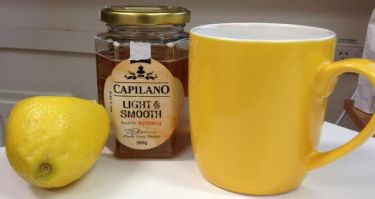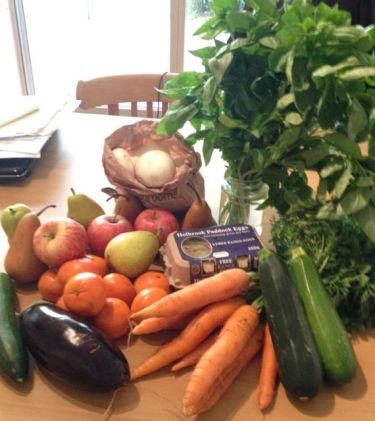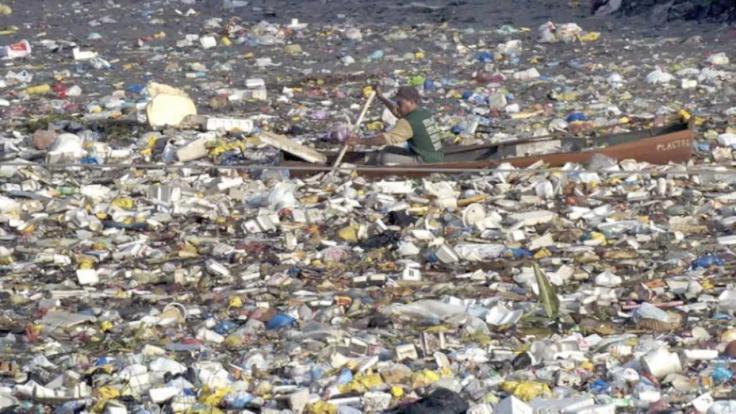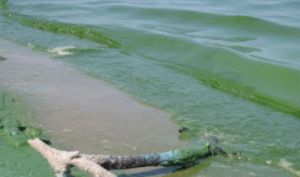Every two years a group of PhD students disappear into the geological wilderness for the RSES Student Field Trip. In 2014, students spent two weeks camping in the Australian outback investigating the regional geology of Central Australia. After many discussions and presentations about exotic and tropical locations, the student cohort settled on a geological road trip around Tasmania. Here is a quick overview of the geological history of Tasmania and some of the cool sites we managed to visit.
By Eleanor
Could you eat plastic-free for a week?
I’m up to day 6 of this strange challenge I’ve set for myself. It was Bianca’s post in this blog, in fact, that opened my eyes to the issues of producing so much plastic waste. Actually, there have been several posts about plastic on this blog. Reading about this, and watching the really cool video in Bianca’s post made me think, but to be honest I didn’t try to change my behaviour.
Then I went to Japan for three weeks, and found myself constantly encountering plastic-gone-crazy products similar to what Bianca described. One time, buying some biscuits, I found myself holding a plastic bag, containing a plastic packet, which I would later discover contained a plastic tray, and in the tray each biscuit was individually wrapped. Don’t get me wrong: I really enjoyed my time in Japan and I liked many aspects of the Japanese culture. But they do seem to like plastic. Everything comes individually wrapped, and they even have plastic food in their shop windows.

I felt so bad for the planet that I decided when I got home I would try to go for a week without eating anything that came to me wrapped or contained in plastic.
This means no vegemite, sliced bread, nuts, rice, lentils, salt and pepper, spices, cheese, or tea. No tea!!!
I am a big tea drinker; I usually have multiple cups per day. I’ve had to substitute with honey + lemon in hot water, which is nice too, but not quite the same.

Luckily I have a breadmaker and I frequently make my own bread, so I have enjoyed fresh homemade bread with jam (from a jar) or butter (wrapped in paper) for breakfast.
The types of food I most often cook are Italian and Indian, so having to go without cheese and spices is a bit difficult. Fortunately, I have discovered you can get pasta in cardboard boxes. Fresh fruit and veggies are the obvious candidates as a basis for a plastic-free week, so I’ve had a couple of meals of stir-fried veggies, pasta and veggies, and salads.

My first failure happened on Day 5, ironically, during the “Nara festival”. I had visited Nara (which is Canberra’s sister city in Japan) just a few weeks ago, so I was quite excited to go to the festival, and it was a beautiful evening for it. One of the first things we did was watch a demonstration of “mochi pounding” where they whack sticky rice with big mallets to make rice pudding. We were excited to try some samples, which were quite tasty – but half way through eating it I realised, with horror, that I was eating out of a plastic bowl! I turned over the bowl to see if it was at least recyclable. Instead of a number in a triangle*, I found two faces that seemed to be laughing at me: “ha-ha, gotcha!”

Going forward, it is not sustainable to continue to avoid all plastic. But I would like to cut down the amount of single-use, non-recyclable plastic I consume. Here are the things that I’m going to try to do:
- Diligently recycle everything possible
- Buy products with minimal packaging
- BYO containers and bags to the farmers markets
- Buy pasta in cardboard boxes
- Keep making my own bread

On Day 5, Take 2 (I had to try again because of my failure at the Nara Festival), I gave my mother a call. Before I’d made any mention of this project, she said, “I made hummus today, because I’ve been trying to reduce the amount of plastic I use.”
Spooky mother-daughter synchronization? Maybe, or maybe it just means the awareness is spreading. Could we make plastic-free a new dietary requirement?
* It turns out, in the ACT, they don’t use the numbering system. They say that any rigid plastic is recyclable – this includes semi-rigid plastic like biscuit trays. So maybe the smiles on the bottom of that plastic bowl are actually happy, ‘yes please recycle me’ smiles, not so evil after all!
By Biance
Following previous blog posts about plastic in our world, this is a new video everyone should see and share.
We are living in a world where everything is wrapped in plastic, quite often unnecessarily in tons of plastic.
I remember when we bought some cutlery and discovered at home that every single fork, every single spoon and every single knife was packed into it’s own private plastic bag just to be wrapped once more into a larger bag to bundle all forks, all spoons and all knifes to pack them once again in a plastic bag. It was not just a total waste of plastic it was also very annoying to unpack.
Maybe I shouldn’t have unpacked it, maybe I should’ve just give it back and try a different company but hey, who knows how often I would’ve need to return the new cutlery until I find a company that doesn’t use that much plastic?

Unfortunately, these days, because we have it and we can do it, companies just use it, everywhere and for everything. They don’t care about the environment as long customers buy their products. And that is where we can change things. It might seem like nothing, it might seem like there won’t be any change if we, as an individual person, act ecologically but if we all start thinking about the way we live and start to take care of our environment it is not just one single person but many of us and that can make a difference!
And yes, I should have given the cutlery back and try a different company! But at least I kept the plastic wrap somewhere at home in a corner so I can reuse it should I ever need some wrapping paper, whether it’s for cutlery or something else but this way I’ll not have to buy any more plastic for quite a while!
By Kate Holland
An image often associated with the melting of the Arctic ice cap, is that of a polar bear standing on thin ice, exemplified in Figure 1.

From: Time
The melting of sea ice is forcing polar bears to spend more time inland. Venturing far from their normal habitat they are interacting and interbreeding with grizzly bears, resulting in grolar bears, pizzly bears or more fancifully known as polizzly bears (pictured in Figure 2).
Technically, the naming of hybrids should depend on the sex of the parents, where the father provides the first half of the species name and the mother provides the latter half. For example, a pizzly bear has a polar bear father and a mama grizzly. But I can imagine it would be far more difficult to determine the paternity/maternity of a hybrid species outside a zoo.

From: The Guardian
The first wild grolar was encountered back in 2006, as a hunting prize. The hunter was able to avoid jail time –-and a fine – when DNA testing by Wildlife Genetics International in British Columbia confirmed the beast was a hybrid of a polar and grizzly bear (the hunters $45,000 permit was only for bagging polar bears). Since then a number of these hybrid bears have been sighted in northern Canada.
Some might argue that interbreeding is a good solution for polar bears faced with climate change. While hybridization is not necessarily a bad thing, it’s the short time periods over which it occurs, that causes a significant drop in genetic diversity. This is damaging to both species and will more quickly push them to extinction.
Interbreeding could also be a potential risk for survival, as obviously, each bear has evolved to live in quite different ecosystems. The grizzly bear is not designed for long swims, but what if a pizzly still has a taste for seals?
Then there is the rest of the ecosystem to worry about – how does the grizzly bear ecosystem deal with a grolar bear? Will it hunt all year round or hibernate? Will the grolar bear be a super predator in its habitat and cause extinctions down the food web? Such an interesting animal could also become the target of hunting (or worse – cheesy horror movies [Polizzlynado anyone?]) as it is not yet protected by conservation laws. In order to protect both, the polar bears and the ecosystems, some out-there ‘conservationists’, have suggested moving the bears to the Antarctic.
Turn back the bears!
Perhaps such issues for many species, both old and new, wouldn’t be such a problem if WE reduced our impacts on the environment – but that’s a discussion for another day.

By Evan
World Wetlands Day happened on February 2nd. The non-profit Global Nature Fund marks the day by naming the most threatened lake in the world. This year, they picked Lake Winnipeg, a large freshwater lake in the province of Manitoba in Canada.
Lake Winnipeg is the 10th largest freshwater lake in the world. Despite it’s great geographical extent, it is actually quite shallow, and therefore prone to pollution and surface weather events. A dam at the northern outlet of the lake was constructed in the 1970s to regulate the water level of the lake. Continue reading “Lake Winnipeg – Most Threatened Lake”
By Kelly

Back in July, an American businessman illegally dumped 100-tonnes of iron sulphate into the ocean just west of Canada, reports the Guardian this week. Russ George allegedly gained permission from a First Nation’s community that border these waters after saying that iron fertilisation would not only sequester carbon, but that the act would replenish dwindling salmon stocks thereby benefitting the environment and local livelihoods. What is being dubbed as ‘rogue’ geoengineering, the act is in blatant violation of both the United Nations Convention on Biodiversity as well as the London Convention on dumping waste at sea. Both prohibit iron fertilisation for commercial gain, with permission for such projects only ever granted for legitimate scientific research. And legitimate research to date does not endorse iron fertilisation as a sustainable climate change mitigation strategy, with large uncertainties surrounding sequestration efficiency and flow on effects to marine ecosystems. From the Guardian:
“It is difficult if not impossible to detect and describe important effects that we know might occur months or years later,” said John Cullen , an oceanographer at Dalhousie University. “Some possible effects, such as deep-water oxygen depletion and alteration of distant food webs, should rule out ocean manipulation. History is full of examples of ecological manipulations that backfired.”
By Luna

I am going to raise a controversial topic that I just can’t resist. Please keep in mind I am not here to judge, but if I can get you to think about it, it will be good enough for me.
I cannot give an explanation for the existence of the dryers.
We have the best, most natural, free and powerful drying system available to the whole world. But in 1799, Monsieur M. Pochon felt the need to create the ventilator; the archetype of the tumble dryer. After him, many others modified it and improved it with the result that nowadays, we can choose between traditional dryers, microwave dryers and ventless dryers divided into spin, condenser, heat pump, mechanical steam compression, convection and solar clothes dryers.
I looked for the reason WHY the dryer was invented in the first place but I couldn’t find anything so I came out with some ideas:
By Luna

I live in one of the shiny new Unilodges that grew at the edge of the campus less than one year ago. As expected, everything is new, never being used and, supposedly, environmentally friendly. All said, what I really think is environmentally friendly is the toilet, as rain water is used for flushing. What about the rest? Well, here are my little thoughts of the day. After 3-4 weeks of my stay, the bulb from one of the table lamps burnt out. We tried to change it with no success and decided to bring it back to the reception. They basically substituted the entire lamp! It seemed there is no way whatsoever to extract the bulb from the lamp. What happens to the lamp once it doesn’t work anymore, I leave it to your imagination.

